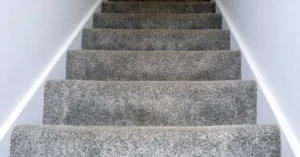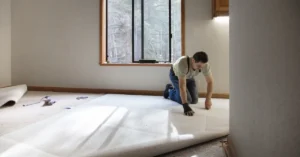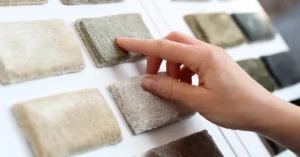Installing flooring over concrete may seem challenging, but with the right approach, it’s completely manageable. Many homeowners prefer wood flooring for its warmth and timeless appeal. Before starting, it’s essential to understand that concrete behaves differently from subfloors made of wood. Concrete can trap moisture, which may affect the wood planks if not treated properly. Therefore, the process of installing flooring over concrete requires careful preparation. By taking the right steps, you can achieve a beautiful, long-lasting floor that enhances your home’s comfort and style. In this guide, we’ll discuss each step in detail so you can complete your project successfully without professional help.
Prepare and Clean the Concrete Surface
Before installing flooring over concrete, it’s important to prepare the surface carefully. Begin by removing any dirt, dust, paint, or old adhesive from the concrete. A clean and level surface helps the wood planks adhere properly and prevents uneven spots later. If your concrete has cracks or holes, fill them using a suitable patching compound. Allow it to dry completely before moving forward. Once the surface is clean, check for moisture levels. Concrete can hold moisture that may damage wood flooring over time. Use a moisture meter to test the surface and ensure it’s fully dry before continuing with installation.
Install a Moisture Barrier
Installing a moisture barrier is a crucial step when install wood flooring over concrete. A moisture barrier prevents water from seeping up through the concrete and damaging the wood. You can use a plastic vapor barrier sheet or an underlayment designed for wood floors. Spread the barrier across the floor and tape the seams together tightly. Make sure it covers the entire surface without any gaps. This step ensures the wood planks stay protected from dampness and warping. A high-quality underlayment can also reduce noise and make the floor more comfortable underfoot. Once the barrier is in place, you can start preparing for the next stage of the process.
Choose the Right Wood Flooring Type
Choosing the right type of wood flooring is essential when install wood flooring over concrete. Solid hardwood is beautiful but can be sensitive to moisture, so engineered wood is often the better option. Engineered wood is designed with multiple layers that resist humidity changes and adapt well to concrete subfloors. It provides the same natural appearance as solid wood but is more stable and durable. You can choose from a variety of finishes and colors to match your interior style. Engineered wood can also be installed using several methods, including floating, glue-down, or nail-down, depending on your preference and subfloor condition.
Acclimate and Layout the Flooring
Before installing wood flooring over concrete, allow the wood planks to acclimate to your room’s temperature. This step prevents expansion or contraction after installation. Leave the boxes of wood flooring in the room for at least two to three days. Once the wood is ready, plan your layout by measuring the room and marking the first row alignment. Start from one wall and leave a small expansion gap of around half an inch. This gap allows the wood to expand naturally without buckling. Carefully align the planks to ensure a straight pattern throughout the room, which will enhance the final appearance of your floor.
Install the Wood Flooring
Now it’s time to begin installing wood flooring over concrete. There are different installation methods depending on the type of flooring you choose. For a floating floor, connect the tongue and groove edges of each plank and place them over the underlayment. For a glue-down installation, apply adhesive to the concrete in small sections and press the planks firmly. Use spacers along the edges to maintain the expansion gap. Continue this process row by row until the entire area is covered. Check each section carefully to ensure a tight and secure fit between planks. Finish by trimming the final pieces and installing baseboards to cover gaps.
Frequently Asked Questions (FAQs)
Q1. Can you install solid hardwood directly on concrete?
No, it’s not recommended. Solid hardwood is prone to moisture damage. Instead, use engineered wood for better durability.
Q2. Do I need to use an underlayment when installing flooring over concrete?
Yes, using an underlayment or moisture barrier helps protect wood flooring from dampness and improves insulation.
Q3. How long should concrete cure before installing wood flooring?
Concrete should cure for at least 60 days to ensure it’s completely dry before installation.
Q4. Can I install wood flooring over painted concrete?
No, painted concrete may prevent proper adhesion. You must remove paint and clean the surface thoroughly first.
Q5. How can I prevent gaps between wood planks after installation?
Ensure proper acclimation before installation and maintain indoor humidity between 35 to 55 percent.
Finishing and Maintenance
After successfully install wood flooring over concrete, take time to inspect the surface. Clean any adhesive residue and wipe the floor with a soft, dry cloth. You can now apply a protective sealant if needed to enhance the wood’s durability. Regular maintenance keeps your wood floor looking fresh and lasting longer. Use a damp mop and avoid excessive water during cleaning. Place rugs in high-traffic areas to protect the finish and prevent scratches. By following these steps and proper care routines, your new wood flooring will remain beautiful and sturdy for many years.





